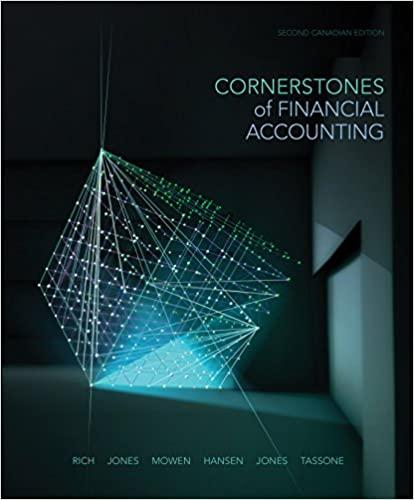Question
Master Corporation acquired 80 percent ownership of Stanley Wood Products Company on January 1, 20X1, for $146,000. On that date, the fair value of the
| Master Corporation acquired 80 percent ownership of Stanley Wood Products Company on January 1, 20X1, for $146,000. On that date, the fair value of the noncontrolling interest was $36,500, and Stanley reported retained earnings of $43,000 and had $93,000 of common stock outstanding. Master has used the equity method in accounting for its investment in Stanley. |
| Trial balance data for the two companies on December 31, 20X5, are as follows: |
| Master Corporation | Stanley Wood Products Company | |||||||||
| Item | Debit | Credit | Debit | Credit | ||||||
| Cash & Receivables | $ | 91,000 | $ | 66,000 | ||||||
| Inventory | 268,000 | 94,000 | ||||||||
| Land | 81,000 | 81,000 | ||||||||
| Buildings & Equipment | 507,000 | 153,000 | ||||||||
| Investment in Stanley Wood Products Stock | 178,120 | |||||||||
| Cost of Goods Sold | 115,000 | 43,000 | ||||||||
| Depreciation Expense | 21,000 | 11,000 | ||||||||
| Inventory Losses | 11,000 | 6,000 | ||||||||
| Dividends Declared | 38,000 | 23,600 | ||||||||
| Accumulated Depreciation | $ | 190,000 | $ | 77,000 | ||||||
| Accounts Payable | 55,000 | 12,000 | ||||||||
| Notes Payable | 235,240 | 105,600 | ||||||||
| Common Stock | 290,000 | 93,000 | ||||||||
| Retained Earnings | 304,000 | 83,000 | ||||||||
| Sales | 202,000 | 107,000 | ||||||||
| Income from Subsidiary | 33,880 | |||||||||
| $ | 1,310,120 | $ | 1,310,120 | $ | 477,600 | $ | 477,600 | |||
| Additional Info: | ||||||||||
1. On the date of combination, the fair value of Stanleys depreciable assets was $46,500 more than book value. The accumulated depreciation on these assets was $10,000 on the acquisition date. The differential assigned to depreciable assets should be written off over the following 10-year period.
2. There was $12,000 of intercorporate receivables and payables at the end of 20X5.
|
1. Record basic consolidation entry. 2. Record the amortized excess value reclassification entry. 3. Record the excess value (differential) reclassification entry. 4. Record the entry to eliminate the intercompany accounts. |
Step by Step Solution
There are 3 Steps involved in it
Step: 1

Get Instant Access to Expert-Tailored Solutions
See step-by-step solutions with expert insights and AI powered tools for academic success
Step: 2

Step: 3

Ace Your Homework with AI
Get the answers you need in no time with our AI-driven, step-by-step assistance
Get Started


